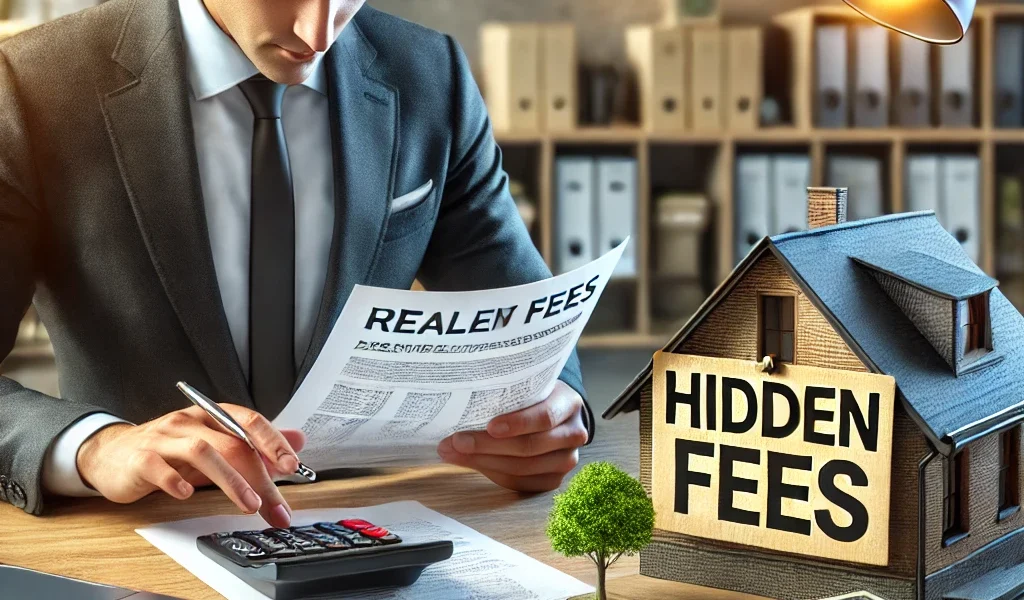Introduction
Real estate investment is often seen as a lucrative way to build wealth, but many investors—especially beginners—fail to account for the hidden costs that come with it. While purchasing a property may seem straightforward, unexpected expenses can significantly impact your returns.
In this DIY guide, we’ll walk you through the often-overlooked costs associated with real estate investment, ensuring you’re well-prepared before making a purchase.
1. Closing Costs: More Than Just the Property Price
Many first-time investors assume that once they agree on a property price, their expenses are covered. However, closing costs can add 2-5% of the property value to your investment. These costs typically include:
- Loan Origination Fees – Charged by lenders to process your mortgage.
- Title Insurance & Search Fees – Ensures the property has no legal disputes.
- Escrow Fees – Covers the cost of third-party escrow services.
- Home Inspection & Appraisal Costs – Required by lenders to verify the property’s value and condition.
- Legal & Notary Fees – To cover the cost of documentation and verification.
DIY Tip:
Before finalizing a property, request a Good Faith Estimate (GFE) from your lender to understand all potential closing costs.
2. Property Taxes: An Ongoing Expense
Your local government will charge annual property taxes, which can range from 0.5% to 3% of the property’s assessed value. This cost may increase over time due to rising property values or changes in tax laws.
DIY Tip:
Use online property tax calculators or check with the local tax authority to estimate your expected tax burden before purchasing.
3. Maintenance & Repairs: Budgeting for the Unexpected
One of the most underestimated expenses in real estate investing is ongoing maintenance and emergency repairs. Common costs include:
- Plumbing & Electrical Repairs
- Roof & Structural Maintenance
- Pest Control & Landscaping
- Heating, Ventilation, and Air Conditioning (HVAC) Repairs
DIY Tip:
Follow the 1% Rule – set aside at least 1% of the property’s value annually for maintenance.
4. Homeowners Insurance: Protection Comes at a Price
Property insurance protects you from damages caused by natural disasters, theft, and liability claims. However, premiums can be high, depending on location and property type.
DIY Tip:
Compare multiple insurance providers and consider bundling insurance policies (if you own multiple properties) to get discounts.
5. HOA Fees: A Hidden Expense in Gated Communities
If you invest in a condo, townhouse, or gated community, you may be required to pay Homeowners Association (HOA) fees. These fees cover common area maintenance, security, and amenities but can be expensive.
DIY Tip:
Before purchasing, request a copy of HOA rules and financials to understand any potential special assessments that could increase your costs.
6. Vacancy Costs: The Expense No One Talks About
Real estate investment assumes a steady rental income, but what if your property remains vacant for months? Mortgage payments, utilities, and property upkeep continue even if you have no tenants.
DIY Tip:
Keep a cash reserve equivalent to 3-6 months of expenses to cover potential vacancies.
7. Property Management Fees: When DIY Becomes Costly
If you don’t have the time or expertise to manage tenants, handle repairs, and collect rent, you might hire a property management company. Their fees typically range from 8-12% of your monthly rental income.
DIY Tip:
For a DIY approach, use property management software to handle rent collection, maintenance tracking, and lease agreements digitally.
8. Legal & Compliance Costs: Staying Out of Trouble
Failing to comply with local zoning laws, rental regulations, or safety codes can lead to hefty fines or legal disputes. Some common legal costs include:
- Tenant Screening & Lease Agreement Drafting
- Eviction Costs (if required)
- State & Federal Tax Filing Fees
DIY Tip:
Consult a real estate attorney or use pre-verified online legal services to ensure your lease agreements and contracts comply with local laws.
9. Utilities & Services: Who Pays What?
If you’re investing in rental properties, utilities such as electricity, water, trash collection, and internet may either be included in rent or passed to the tenant. If your tenants don’t pay their bills, you might have to cover the costs.
DIY Tip:
Clearly define who pays for what in your rental agreement to avoid disputes.
10. Capital Expenditures: The Big-Ticket Expenses
Beyond routine maintenance, major replacements (called CapEx) can be costly. These include:
- New Roof ($5,000 – $15,000)
- HVAC System ($3,000 – $7,000)
- Kitchen/Bathroom Renovation ($10,000+ per unit)
DIY Tip:
Set aside $1 per square foot of the property per year for long-term CapEx planning.
Conclusion: Plan for the Unexpected, Profit in the Long Run
Real estate investing isn’t just about buying a property—it’s about understanding and preparing for hidden costs to ensure long-term profitability. By planning for these expenses in advance, you can avoid financial surprises and build a successful real estate portfolio.
Key Takeaways:
✔️ Always request a Good Faith Estimate for closing costs
✔️ Budget for property taxes, insurance, and maintenance
✔️ Have a financial cushion for vacancies and emergencies
✔️ Understand legal and compliance costs to stay safe
✔️ Plan for long-term capital expenditures




